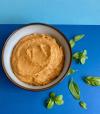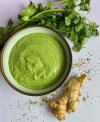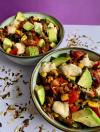
Patients who have undergone bariatric surgery often struggle with regurgitation. Here are the four most common causes, with tips for avoiding problems.
Volume
Your Bariatric team should have given some guidance on this, but if you are unsure, it is important to make contact to discuss this. Often the small portion sizes recommended after surgery can look comical in size, but sticking to these guidelines will help improve your tolerance to food.
Measuring cups can be incredibly useful in the earlier stages whilst you get used to your new portions along with small ramekins or bowls.
If you have too many leftovers, think about freezing some. You’ll thank yourself later for those quick easy meal options when you don’t feel like cooking.
Speed of eating
Your portions may be small, but taking your time with meals is very important; aim to sit down in a relaxed environment with minimal distractions like the TV, computer or your phone. This will allow you to focus on your food and take your time with eating.
If you are struggling with food tolerance, aim to take bites the size of your thumb nail, chew well and wait at least 20 seconds between mouthfuls. Allowing your food to sit in your mouth for longer will also help with greater enjoyment of your meal as the food is exposed to your taste buds for longer.
Texture
In the early stages post surgery, you are usually guided to eat puree foods to begin with. A puree consistency needs to be completely smooth, so get your blender out and make sure there are no lumps before eating. Adding some form of liquid e.g. stock, broth, tinned tomatoes, gravy or milk will help to achieve the right consistency.
If you have progressed to the soft diet stage, food should be fork mashable. Everything needs to be soft and tender so it can be easily broken down so adding liquid when you cook will help to achieve this. Casseroles, stews, soups, or poached proteins are excellent choices.
If you are past the soft diet stage and eating normal foods again, you still need to be careful of dry, reheated or rubbery proteins. Adding a homemade yoghurt dressing, some hummus, or a dollop of cottage cheese can help add moisture to your proteins. Be mindful o doughy or sticky foods like bread, pizza dough, scones or rice. These foods are likely to sit heavily in your new stomach and will leave you feeling uncomfortable. Keep your foods based around tender lean proteins and non-starchy vegetables to reduce the risk of regurgitation and obtain the important nutrients you need.
Timing of fluids
Are you waiting 30 minutes either side of eating before drinking fluids? Depending on the type of surgery you have had, your stomach is ½ cup or less in capacity. This means there is not enough room for both food and fluid so aim to keep meal times for food alone and only drink between meals.
Still having issues?
Contact the dietitian supporting you through this process or get in touch here.


